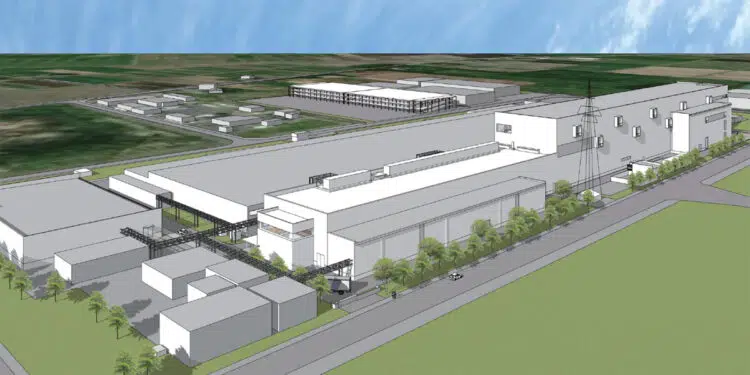TDK announced construction of new MLCC production plant in Japan with focus on high-reliable automotive products.
TDK Corporation announces that it has decided to construct a new production building on the premises of the Kitakami Factory (Kitakami city, Iwate prefecture, Japan) of TDK Electronics Factories Corporation (to enhance the multilayer ceramic capacitors (hereinafter, “MLCC”) production. It is planned to start the construction of the new building at the end of this fiscal year (March 2023) and complete it in June 2024.
Currently, the popularity of electric vehicles (EV) is increasing globally, and the sophistication of motor vehicles is expanding, including automated driving technologies (ADAS) and other driver assist technologies. This further increases the power consumption of many ECUs (electric control units) and accelerates the increase of high voltages. The trend is that the number of electronic devices and components that are installed in a single vehicle is increasing, resulting in the reliability of electronic components having a greater impact on the reliability of the complete vehicle.
Alongside the electronic devices for automobiles becoming smaller and more sophisticated, the number of electronic components installed in vehicles is increasing and their use environments are becoming more extreme, which means that electronic components must be more compact, sophisticated, and reliable. It is essential that electronic components, such as MLCCs must be highly reliable, which requires a high resistance to rapid temperature variations, mechanical strength, and high voltages.
TDK has been establishing a system to increase production volume at its existing MLCC production sites and affiliate companies since last year. In order to further increase the production volume of MLCCs, TDK has decided to construct a new production building that enables comprehensive production, encompassing everything from materials to finished products at TDK Electronics Factories Corporation, Kitakami Factory. The increased production in this new building will enable TDK to satisfy growing demand from our customers.
In addition, the factory will be constructed with a facility layout that reduces energy loss, and the exhaust heat and air environment will also be improved to achieve thorough energy conservation and contribute to CO2 emission reduction.
The construction of the new production building at the Kitakami Factory is the second project that is a part of TDK’s electronic component “Monozukuri enhancement”, following the construction of a new wing at the Inakura Factory (West site) (Nikaho City, Akita Prefecture), which TDK announced recently. TDK Electronics Factories Corporation will continue to develop the electronic component business.
| 1. Construction site | : 106-163, 2 Jiwari, Goto, Wagacho, Kitakami-shi, Iwate |
| 2. Total floor area | : Approx. 33,000 m2 |
| 3. Building structure | : 4 stories |
| 4. Main businesses | : Development and manufacturing of multilayer ceramic capacitor |
| 5. Construction start date | : March 2023 (plan) |
| 6. Completion date | : June 2024 (plan) |
| 7. Mass production start date | : September 2024 (plan) |


































